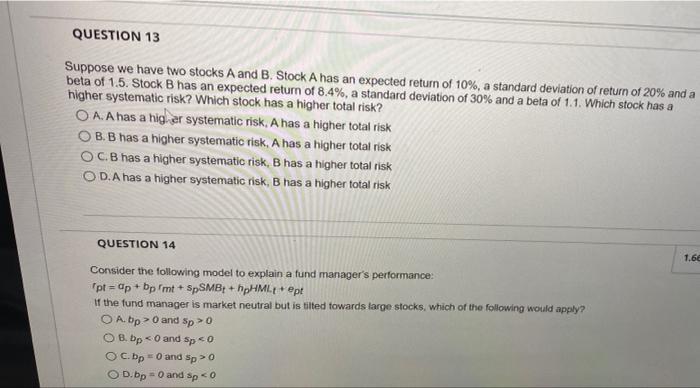Answered step by step
Verified Expert Solution
Question
1 Approved Answer
QUESTION 13 Suppose we have two stocks A and B. Stock A has an expected return of 10%, a standard deviation of return of

QUESTION 13 Suppose we have two stocks A and B. Stock A has an expected return of 10%, a standard deviation of return of 20% and a beta of 1.5. Stock B has an expected return of 8.4%, a standard deviation of 30% and a beta of 1.1. Which stock has a higher systematic risk? Which stock has a higher total risk? OA. A has a higher systematic risk. A has a higher total risk B. B has a higher systematic risk, A has a higher total risk OC.B has a higher systematic risk, B has a higher total risk OD.A has a higher systematic risk, B has a higher total risk QUESTION 14 Consider the following model to explain a fund manager's performance: pt=ap+bpfmt + SpSMBt+ hpHMI.t+ept If the fund manager is market neutral but is tilted towards large stocks, which of the following would apply? OA. bp > 0 and Sp> 0 OB. bp < 0 and sp < 0 OC. bp = 0 and Sp> 0 O D. bp = 0 and Sp
Step by Step Solution
There are 3 Steps involved in it
Step: 1
QUESTION 13 B B has a higher systematic risk A has a higher total risk Systematic risk is often meas...
Get Instant Access to Expert-Tailored Solutions
See step-by-step solutions with expert insights and AI powered tools for academic success
Step: 2

Step: 3

Ace Your Homework with AI
Get the answers you need in no time with our AI-driven, step-by-step assistance
Get Started


